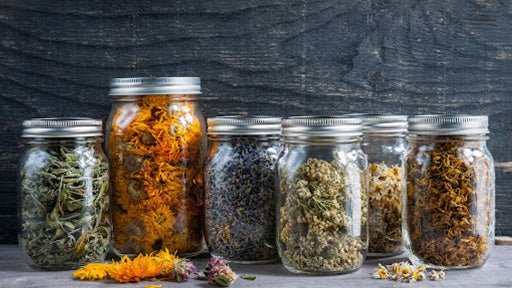

Foraging and Infused Honey
How to Infuse Honey with Saskatchewan Foraged Wild Herbs and Flowers
Infusing honey with foraged herbs and flowers is an easy way to add some local flavour and personality to your kitchen. Starting with raw local honey means you’re working with the real deal—pure Saskatchewan sweetness in a jar. Whether you’re just getting into foraging or looking to mix things up, this guide will show you how to craft your own tasty, small-batch infused honey at home using herbs and flowers you pick with your own hands! The bees already did the hard part. You’re just adding a little extra sparkle from the land.
Why Infuse Honey?
Infused honey is equal parts pantry staple and kitchen alchemy. The herbs lend their flavour, colour, and scent to the honey, and in return, the honey preserves the flavour and nutrition of the wild plants. It’s the kind of thing that makes a simple cup of tea feel a little more special, or turns breakfast into something poetic. Plus, it’s a beautiful way to connect with the land—especially here in Saskatchewan, where the wild gifts are abundant if you know where to look.
WHAT YOU’LL NEED FOR YOUR WILD FORAGED HONEY INFUSION
-
Pure Saskatchewan honey (raw is best for flavour and nutrition)
-
Clean, dried foraged herbs, flowers, or berries
-
A clean glass jar with a lid
-
A warm shelf or cupboard
-
Optional: fine mesh strainer or cheesecloth
STEP 1 - Forage and dry your plants
Pick herbs or flowers on a dry, sunny day. Choose clean spots—away from roads, sprays, or busy dog-walking trails. Rinse lightly if needed, then dry completely. You can lay them on a towel for a few days, or use a dehydrator. Moisture in your jar = risk of mold. So make sure everything’s nice and dry before proceeding.
STEP 2 - Fill your jar
Add your dried plants to the jar—about one-quarter to one-third full. You want to leave space for the honey to flow through.
STEP 3 - Add the honey
Pour in your raw local honey until it covers the herbs completely. Stir gently with a clean utensil to remove air bubbles. Then cap the jar with a tight-fitting lid.
STEP 4 - Let it infuse
Store the jar in a warm spot (room temperature is fine—just avoid direct sunlight). Flip or gently shake the jar every day or two to keep things moving. Let it infuse for a couple of weeks.
STEP 5 - Strain (optional)
After two weeks, you can strain out the herbs using cheesecloth or a fine mesh strainer. If you choose to strain it, make sure you strain it into another sterlized jar. Or if you don’t mind the rustic look, leave them in! Either way, the honey will have picked up color, scent, and flavour from your wild foraged additions.
STEP 6 - Store it
Keep your infused honey in a cool, dark place. It’s shelf-stable for months, but the flavour is usually best within the first 3 to 6 months.
Easy Foraged Herbs in Saskatchewan to Try
If you’re new to foraging, start simple. These are some easy-to-identify and beginner-friendly options in Saskatchewan:
-
Wild mint – cooling and fresh. Harvest in the middle of summer, before the plant flowers.
-
Spruce tips – citrusy and bright. Harvest in the spring and early summer when the tips are 2-3cm long.
-
Saskatoon berries – sweet and earthy. Harvest begins at the end of June.
-
Wild rose petals – floral and romantic. Harvest begins mid-June.
Dandelion flowers – mild and honey-sweet. Harvest anytime between April and September when the flowers are in bloom, before they go to seed.
Foraging Basics For Your Floral and Herbal Honey Infusion
ALWAYS read up on how to properly harvest whatever you are foraging so that you can make sure you’re not disrupting the natural way of things in nature. Educate yourself to avoid unknowingly harming a plant or animal population and minimize any negative impact your activity may have on the environment.
Foraging NO NOs (What To Avoid)
-
Don’t pick anything you can’t positively identify.
-
Don’t forage near roads, sprayed fields, or urban lawns.
-
Don’t take more than one-quarter of any plant or patch.
-
Don’t forage in protected areas without permission.
-
Don’t use fresh, wet plants for your honey—dry them first.
You Can Make The Best Saskatchewan Honey Even Better
There’s something grounding about harvesting plants and preserving them in local honey. Plus, you’re adding to the Health Benefits of Raw Local Saskatchewan Honey by infusing it with other edible and medicinal plants. The next time you find yourself out on the land—whether it’s the edges of your garden or a quiet patch off a gravel road—bring a basket or a paper bag. You never know what wild edible or medicinal plants you might find. With a few dried herbs and a jar of honey, you’re all set! What plant will you start with?